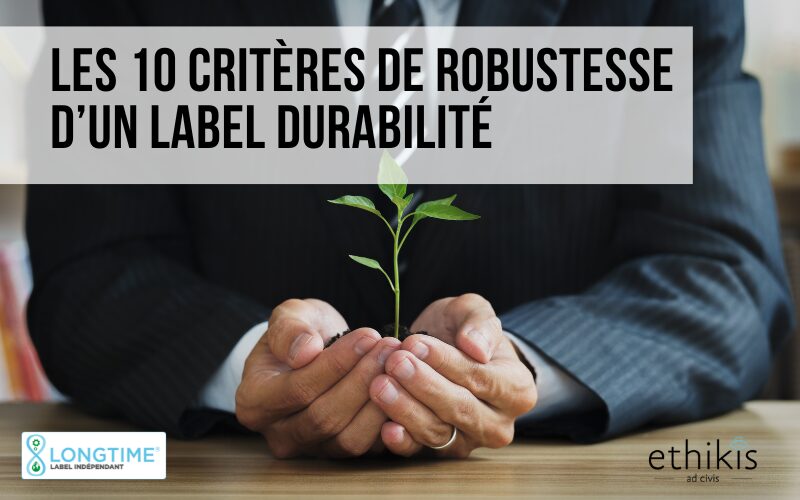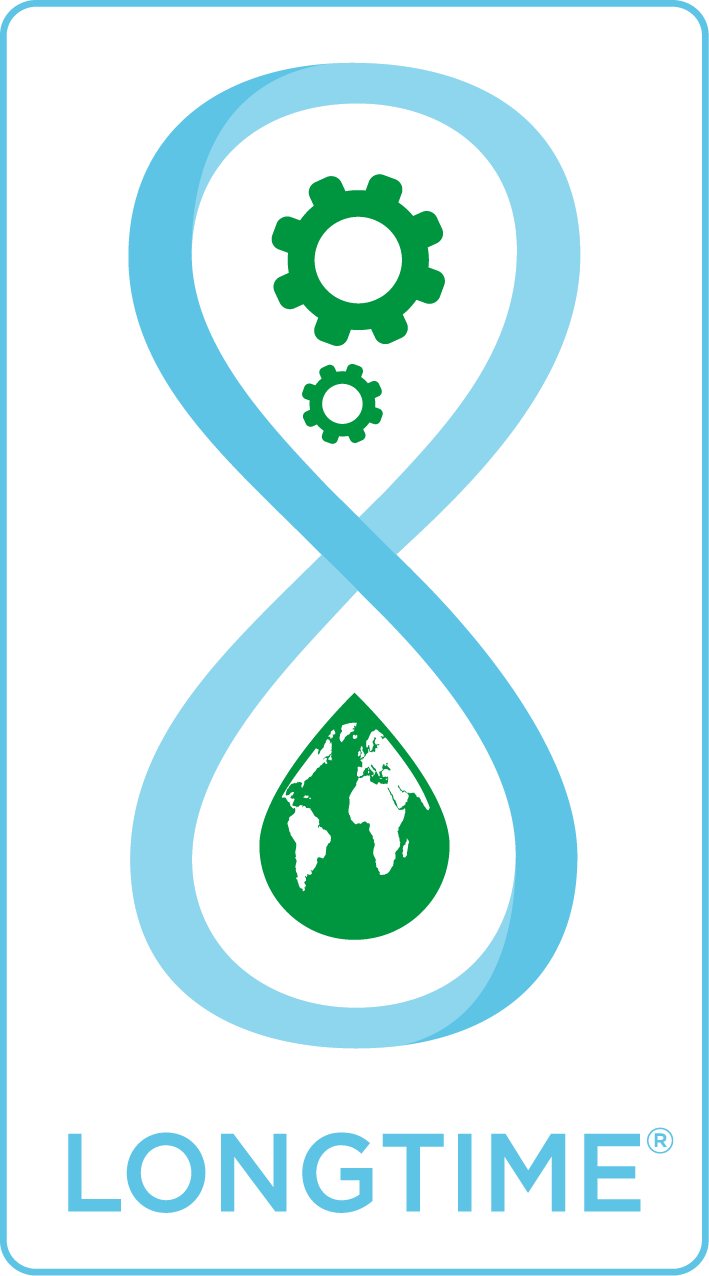
Sustainability labels play a crucial role in meeting today’s environmental and social challenges. They help consumers to make informed choices and encourage companies and their brands to develop products with a lower life-cycle impact, in particular by adopting more responsible practices that help to reduce premature waste.
On this subject, the Green Claims Directive is a new proposal for a European directive designed to regulate the use of environmental claims on products, including labelling programmes, and thus combat greenwashing practices, to stop the profusion of ecological messages and those linked to respect for the environment, and to make the ‘fair’ truly sustainable.
In addition to the Green Claims Directive, the International Social and Environmental Accreditation and Labeling Alliance (ISEAL) has focused more specifically on sustainability standards. To guarantee the image and effectiveness of these programmes, ISEAL has established 10 robustness criteria:
- Impact on sustainable development
- Collaboration
- Valuecreation
- Measurableprogress
- Stakeholder engagement
- Transparency
- Impartiality
- Reliability
- Veracity
- Continuous improvement
Fora sustainability label to be truly effective and credible, it must meet a set of robust criteria.
A “durability label” refers to a certification or mark awarded to a product, a product range or a company, indicating its commitment to sustainable practices across environmental, social and economic dimensions. This definition has yet to be clarified in the Green Claims Directive or in related regulatory developments. Writing a demanding sustainability standard is not restricted to a particular product category. Organic food, textiles, outdoor furniture ranges, electrical or electronic equipment, sporting goods and sport tech—products and brands of all types have access to certification schemes covering quality and all aspects of sustainability.
In this article, we will explore these 10 criteria , which can be used to make a fairly detailed assessment of the credibility and relevance of a sustainability label, whether in France, Europe or elsewhere in the world.
1. Impact on sustainable development
Above all, a sustainability label must make a difference where it counts.
It must generate positive social, environmental and economic impacts while eliminating or addressing negative ones. To achieve this, it must clearly define its scope, its specific sustainability objectives, and its strategy for meeting these objectives—also known as its theory of change.
The label must focus on the most significant impacts within its scope and aim to address the root causes of sustainability issues. This often requires challenging the production model of the products covered by the label.

LONGTIME®compliance
Extending the lifespan of consumer goods by improving their quality, reliability and repairability helps reduce the environmental impact of raw material extraction linked to product manufacturing and prevents the premature accumulation of waste—thereby significantly lowering the overall environmental footprint associated with the consumption of goods.
2. Collaboration
A sustainability label cannot operate effectively in isolation from other stakeholders. It must collaborate with governments, businesses, and civil society organisations working towards shared sustainability goals. It should actively seek alignment and respectful cooperation with others, build partnerships, and share acquired knowledge to enhance its effectiveness and both its direct and systemic impact.
LONGTIME®compliance
-
The LONGTIME® label works with many partners and participates in numerous working groups with the government, the UN and other organisations on issues such as reparability and sustainability indices.
3. Valuecreation
The label must create value for all stakeholders involved. It should strive to generate value that fairly rewards the efforts and resources required from users to participate in the system—this is often referred to as the fair trade or equitable trade dimension. It must also support users in implementing their tools and empower them to take action by presenting a clear rationale for engaging with the system.
LONGTIME®compliance
The LONGTIME® label’s fee system is designed to suit all budgets, as fees are calculated as a percentage of the turnover of the labelled product. LONGTIME® also provides manufacturers with support tools to help them prepare for the audit, tailored to all types of organisations.
4. Measurableprogress
A sustainability label must demonstrate the difference it makes. It should have relevant tools to achieve its sustainability objectives and to measure progress towards these objectives over time. Data collection and analysis are essential to measure, understand, and demonstrate the progress made by users in meeting these goals.
LONGTIME®compliance
LONGTIME® is currently conducting an impact study with the support of a professional organisation in the sector. Tangible and measurable progress is already visible, as shown by the growing number of labelled products. Based on a study by ADEME, we have estimated that the LONGTIME® Label could save around 1 million tonnes of CO₂ per year within the next 10 years. This is equivalent to the annual CO₂ emissions of 448,000 homes powered by electricity.
5. Stakeholder engagement
Stakeholder engagement is essential. The label must be inclusive and non-discriminatory, allowing stakeholders to participate in decision-making and to hold the system to account. It should involve a balanced and diverse group of stakeholders in decisions that affect them, ensuring an understanding of the contexts and perspectives of under-engaged or under-represented stakeholders. Furthermore, it must provide clear and transparent feedback on stakeholder input and concerns, while having fair mechanisms in place to address complaints and resolve conflicts.

LONGTIME®compliance
Joining the circle of LONGTIME®-labelled companies means becoming part of a dynamic community centred on sustainability, through webinars, newsletters, and regular consultation processes. Our partnerships with expert and repair professionals, along with our membership in networks and organisations such as RREUSE and ECOS, place us at the heart of sustainability-related activity and enable us to contribute to this collective momentum.
6. Transparency
Transparency is a fundamental element of the credibility and reputation of sustainability standards. Key information must be made publicly available, while protecting confidential and private data. Stakeholders must have access to the information they need to understand and assess the system’s processes, decision-making, outcomes, and impacts.
LONGTIME®compliance
The Reference Framework detailing all the criteria included in our label’s standard is publicly accessible on our website. In addition, our website features a dedicated transparency page that provides in-depth information about the principles and operations of our label, in line with the Green Claims Directive. This ensures that consumers have direct access to all relevant information about the label and the services linked to our work. It also reinforces the credibility of our environmental claim regarding durability.
7. Impartiality
A credible label must be impartial and avoid or mitigate conflicts of interest throughout its governance and operations, particularly when assessing the performance of its users. Transparency and stakeholder engagement help to ensure the integrity of the scheme.
LONGTIME®compliance
The LONGTIME® label is awarded following validation of compliance with the criteria on site by a third-party audit carried out by one of LONGTIME® ‘ s independent partner certification bodies.
8. Reliability
Reliability is crucial for a sustainability label. It must provide reliable assessments of the performance of its users, designing tools for consistent implementation and evaluation. The assessments of user performance must be competent and accurate, supporting all the declarations authorised by the label.
LONGTIME®compliance
The LONGTIME® label criteria are based on robust and scientifically recognised standards and studies relating to the repairability and reliability of products: EN 45552 and EN 45554 standards, the PROMPT and FIDES methods , among others. Third-party audits are carried out by trained and competent personnel.
9. Veracity
Claims and communications made by a credible label must be trustworthy. All claims made by the label or its users must be clear, relevant, and verifiable. They should enable customers and other stakeholders to make informed choices, and the data and evidence supporting claims related to sustainability impacts must be publicly accessible.
LONGTIME®compliance
The LONGTIME® label complies with all the articles of the Green Claims Directive, which governs the truthfulness and substantiation of environmental claims.
10. Continuous improvement
A credible sustainability label is committed to continuous improvement. It must regularly review its objectives, strategies, tool performance, and overall system effectiveness; assess the impact and outcomes of its activities; and apply lessons learned to enhance its performance. It must also respond to new data, stakeholder feedback, and external changes to remain fit for purpose.
LONGTIME®compliance
Continuous improvement is a core principle within the LONGTIME® team. We carry out rigorous, ongoing regulatory monitoring to ensure we consistently go beyond legal requirements and, at the very least, remain aligned with evolving regulations. To update the label’s criteria, LONGTIME® is currently (as of October 2023) undertaking a comprehensive consultation process to gather feedback on the new criteria from a broad range of stakeholders, including experts, manufacturers, and repair professionals.
Things to remember about the 10 robustness criteria for a sustainability label
ISEAL defines the 10 essential criteria that define the robustness ofa sustainability label. These 10 robustness criteria provide an essential framework for assessing the credibility and effectiveness of sustainability labels. Labels that meet these criteria have the potential to play a significant role in promoting responsible and sustainable practices.
These labels must have a significant impact on sustainable development by generating positive outcomes across social, environmental and economic dimensions, while minimising negative impacts. Collaboration with other stakeholders—including governments and businesses—is essential to maximise their effectiveness.
In addition, these labels must create value in a fair and equitable way, recognising users’ efforts and minimising access costs. They should also strive to measure and demonstrate progress towards their sustainability objectives using relevant data.
Stakeholder engagement is another crucial pillar, with a strong focus on inclusiveness and participation in decision-making. Transparency, impartiality, reliability, and truthfulness are key principles for building the credibility of such labels, by providing accessible information and avoiding conflicts of interest.
Finally, continuous improvement is essential, with the constant reassessment of objectives, strategies, and performance to adapt to evolving circumstances and changing needs. Sustainability labels that meet these 10 criteria—such as the LONGTIME® label—have the potential to drive responsible and sustainable practices on a broad scale.
